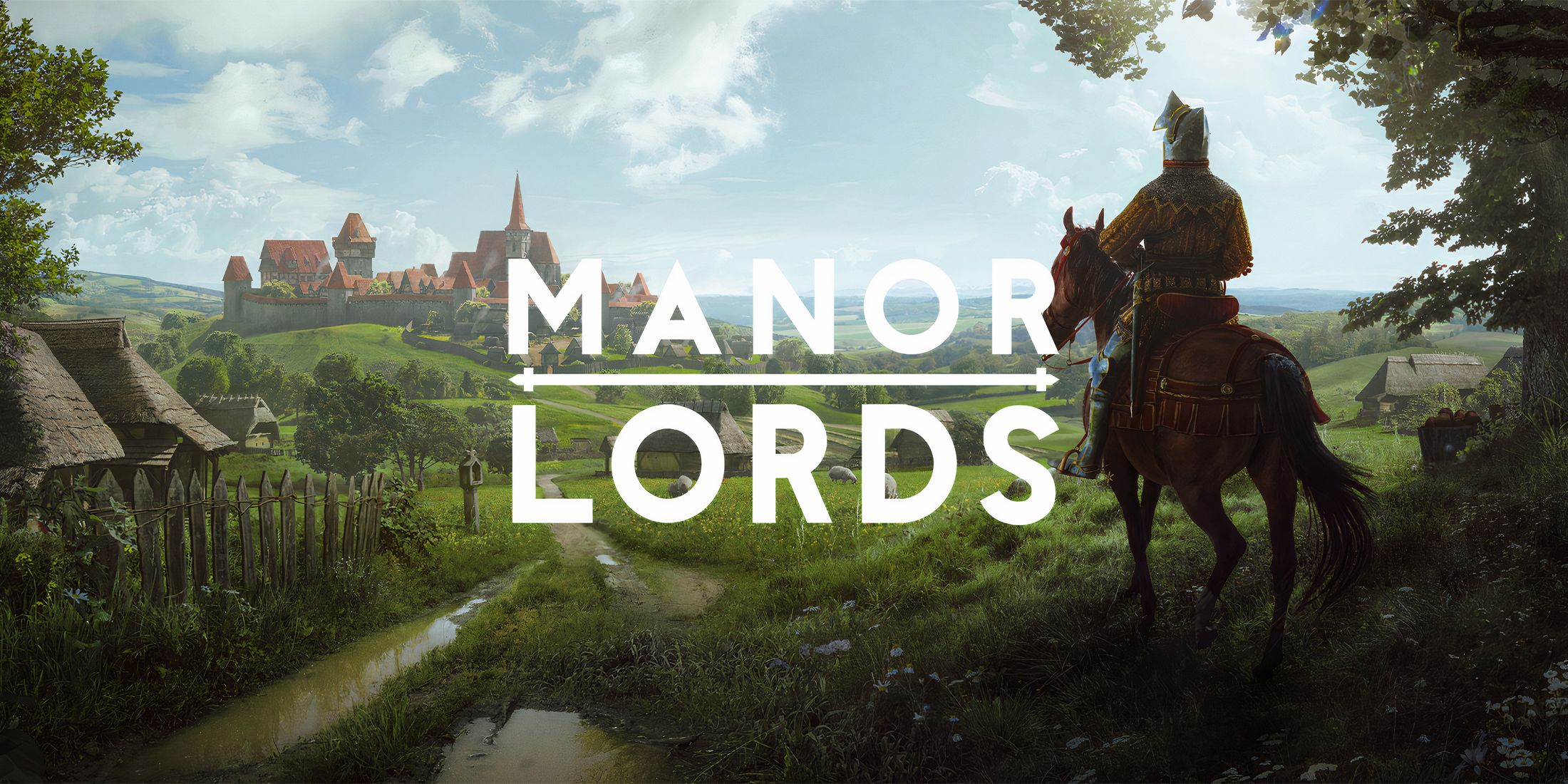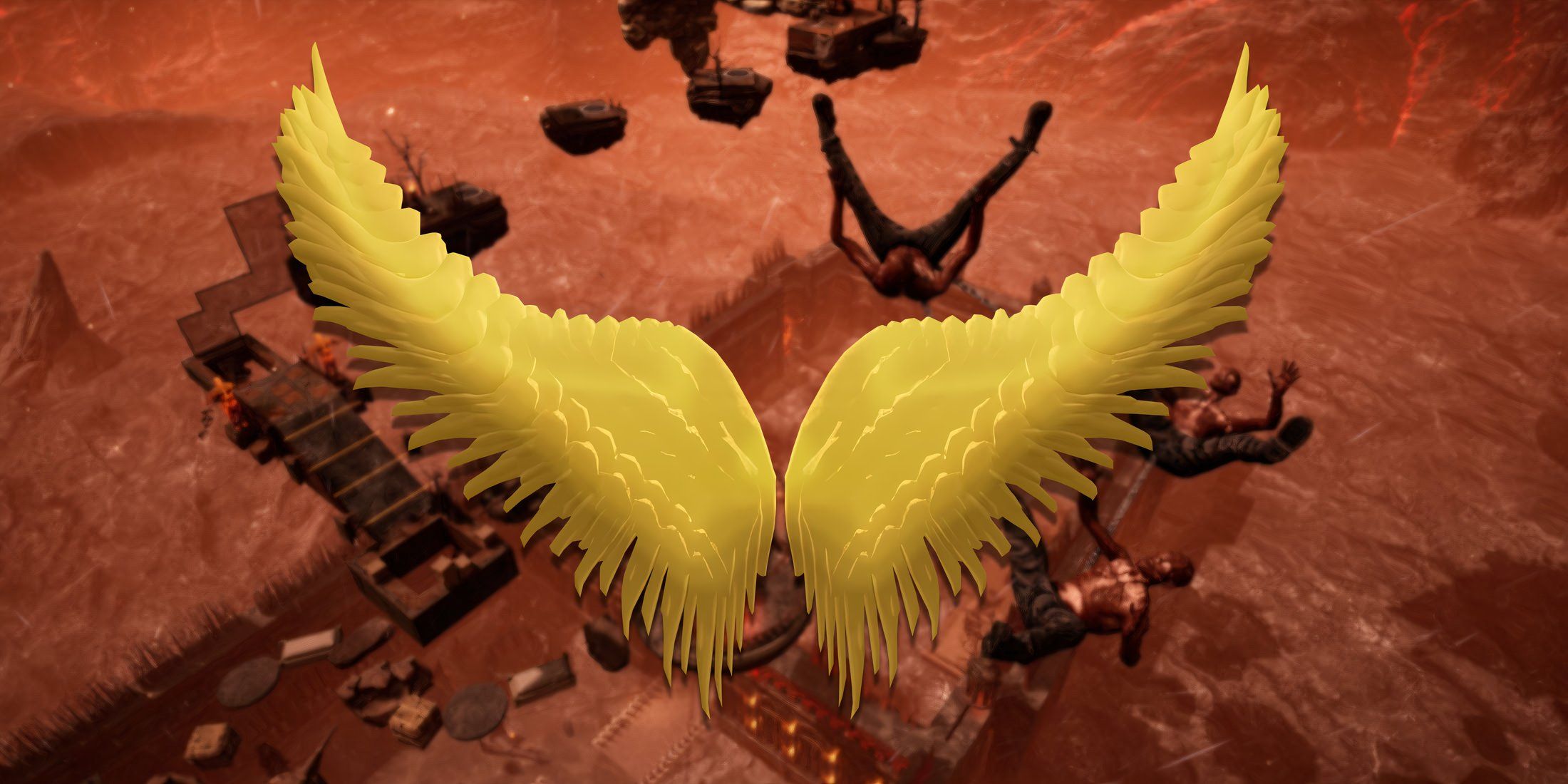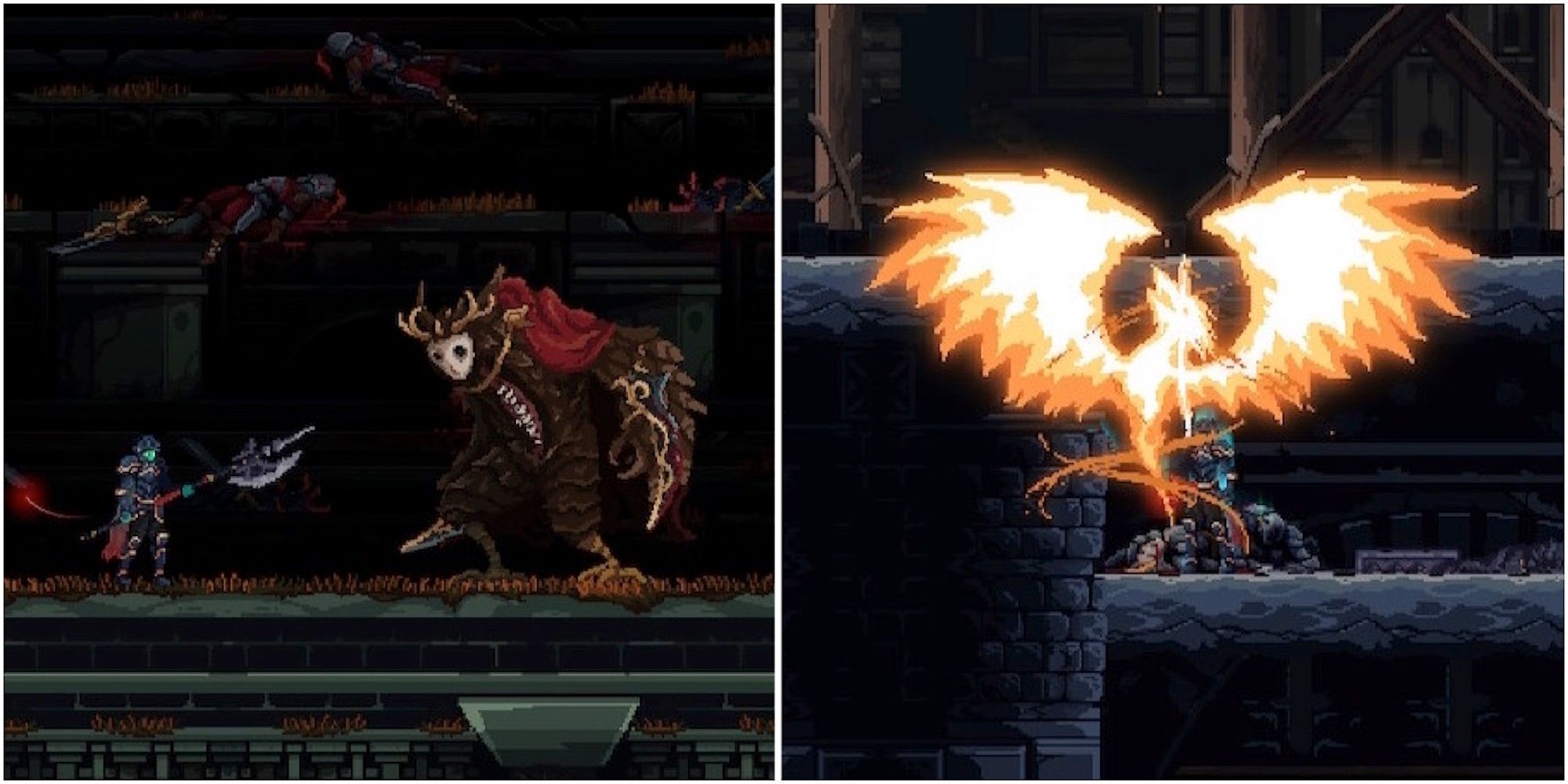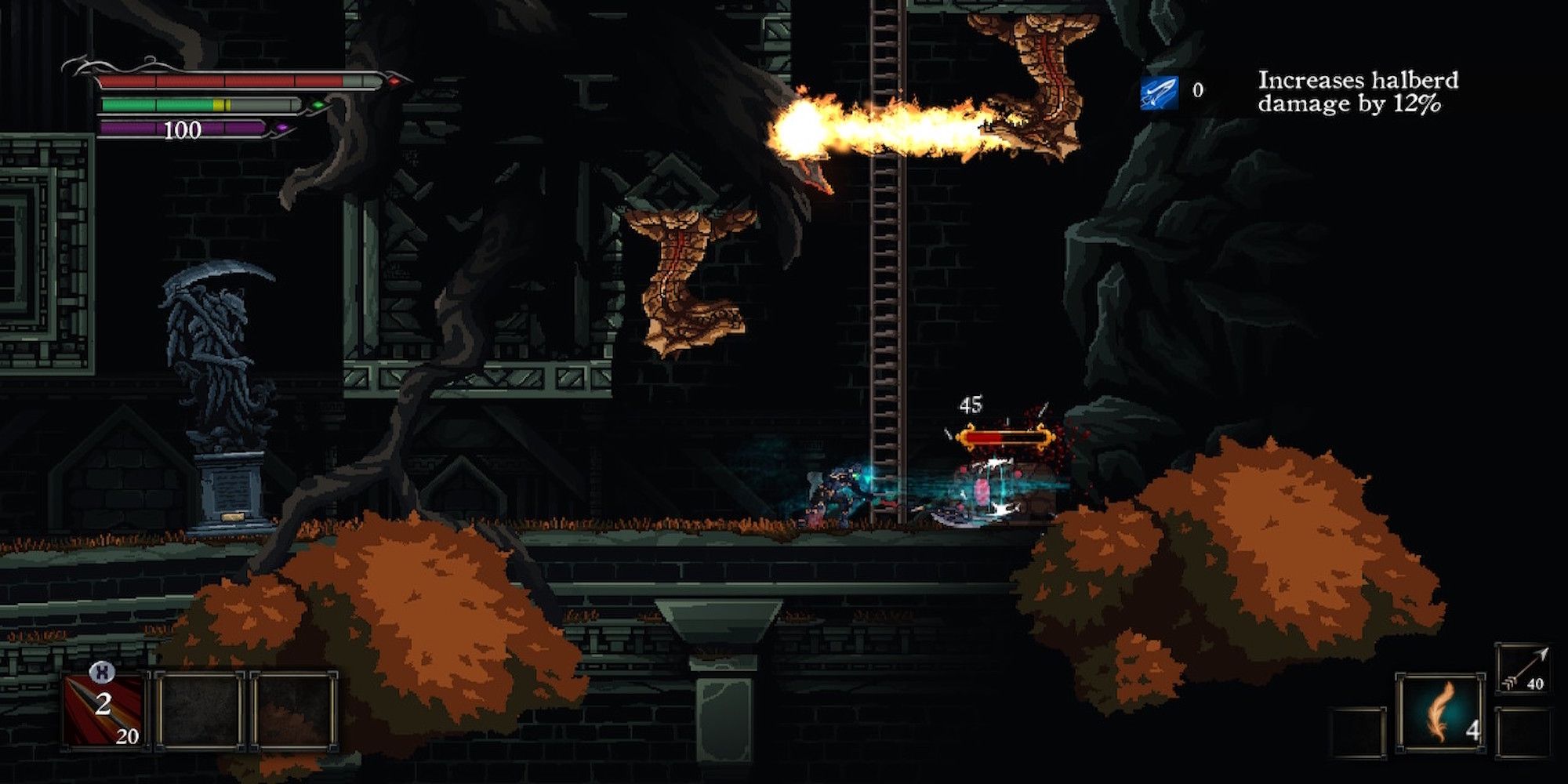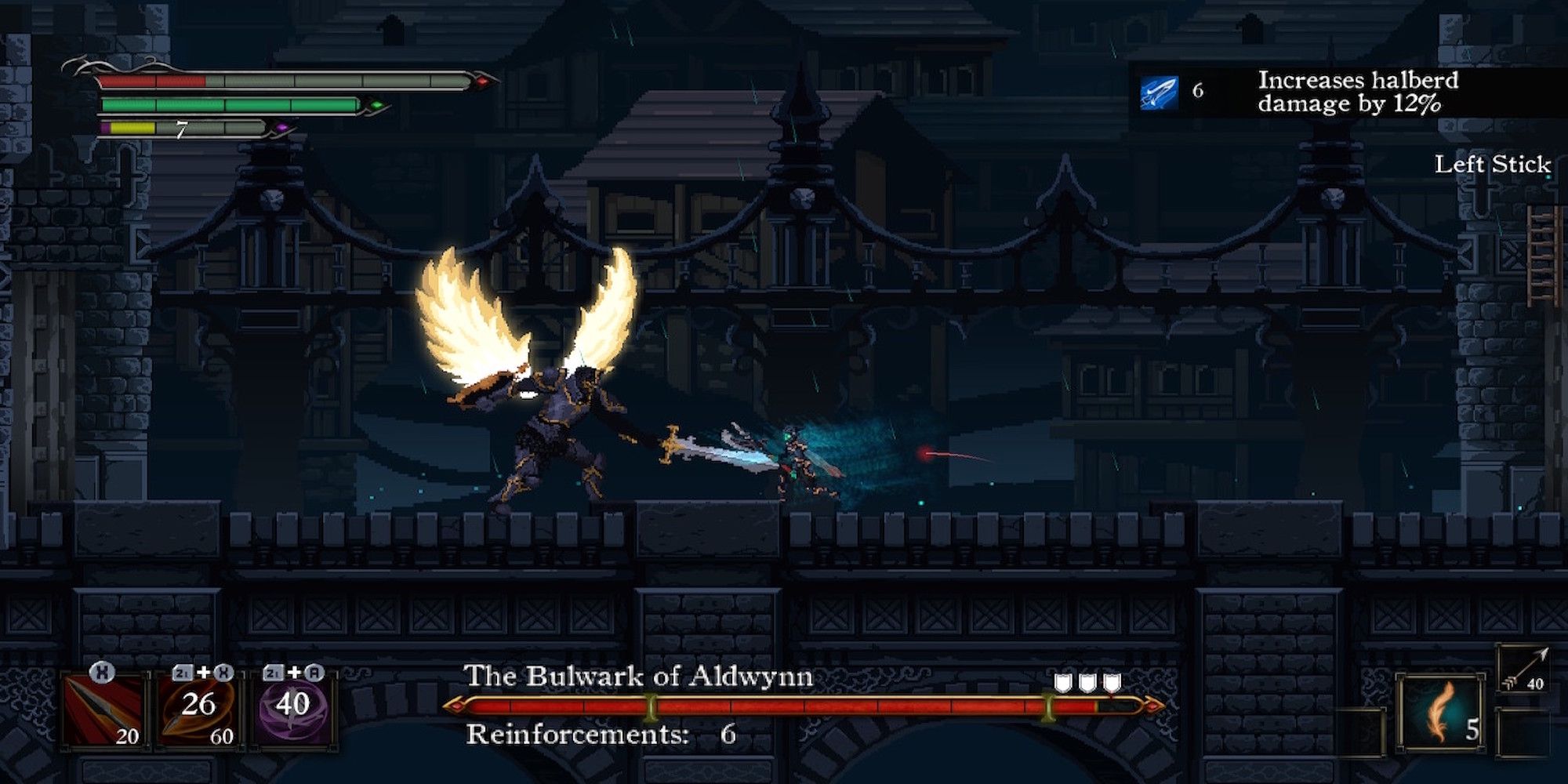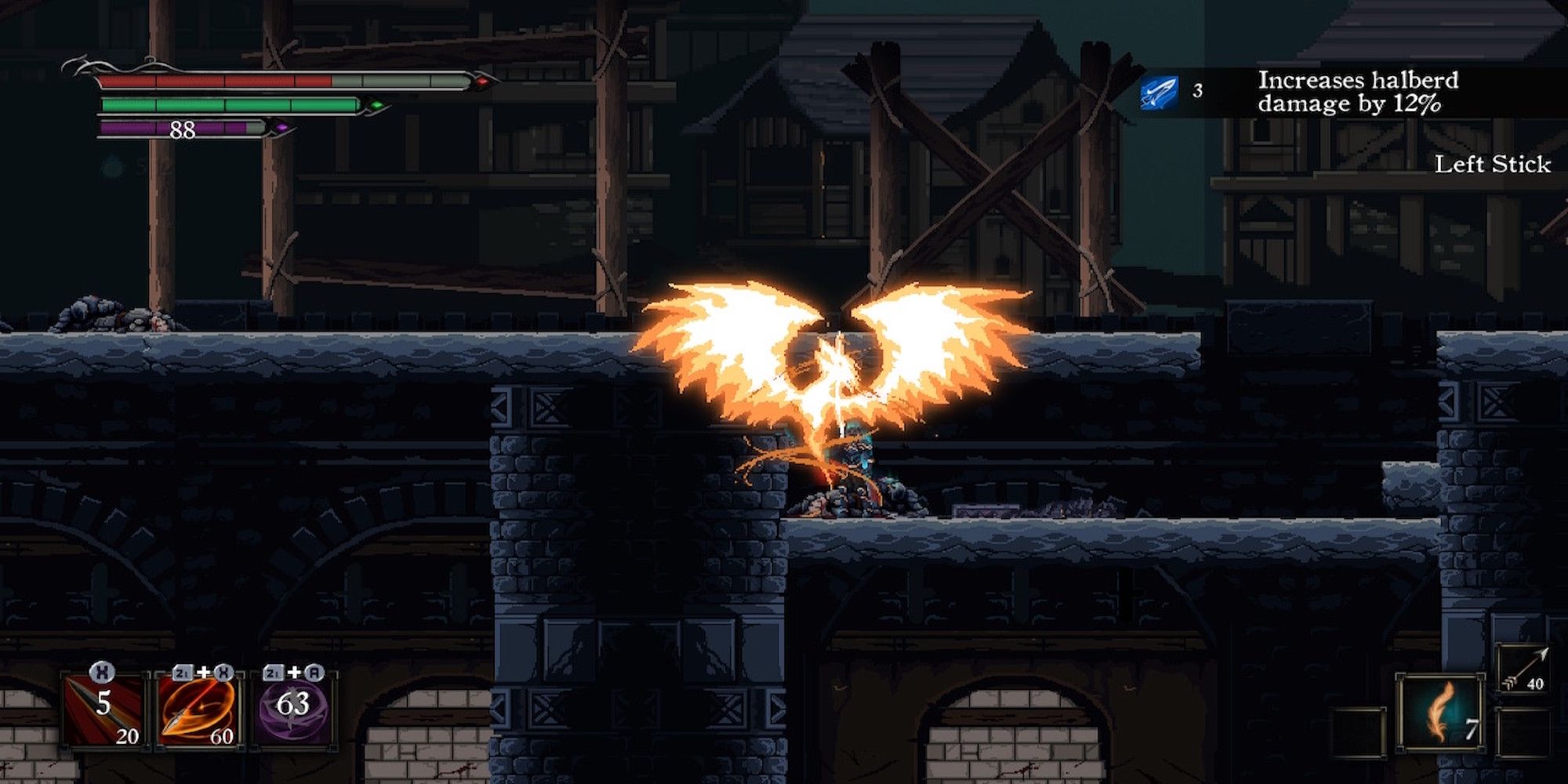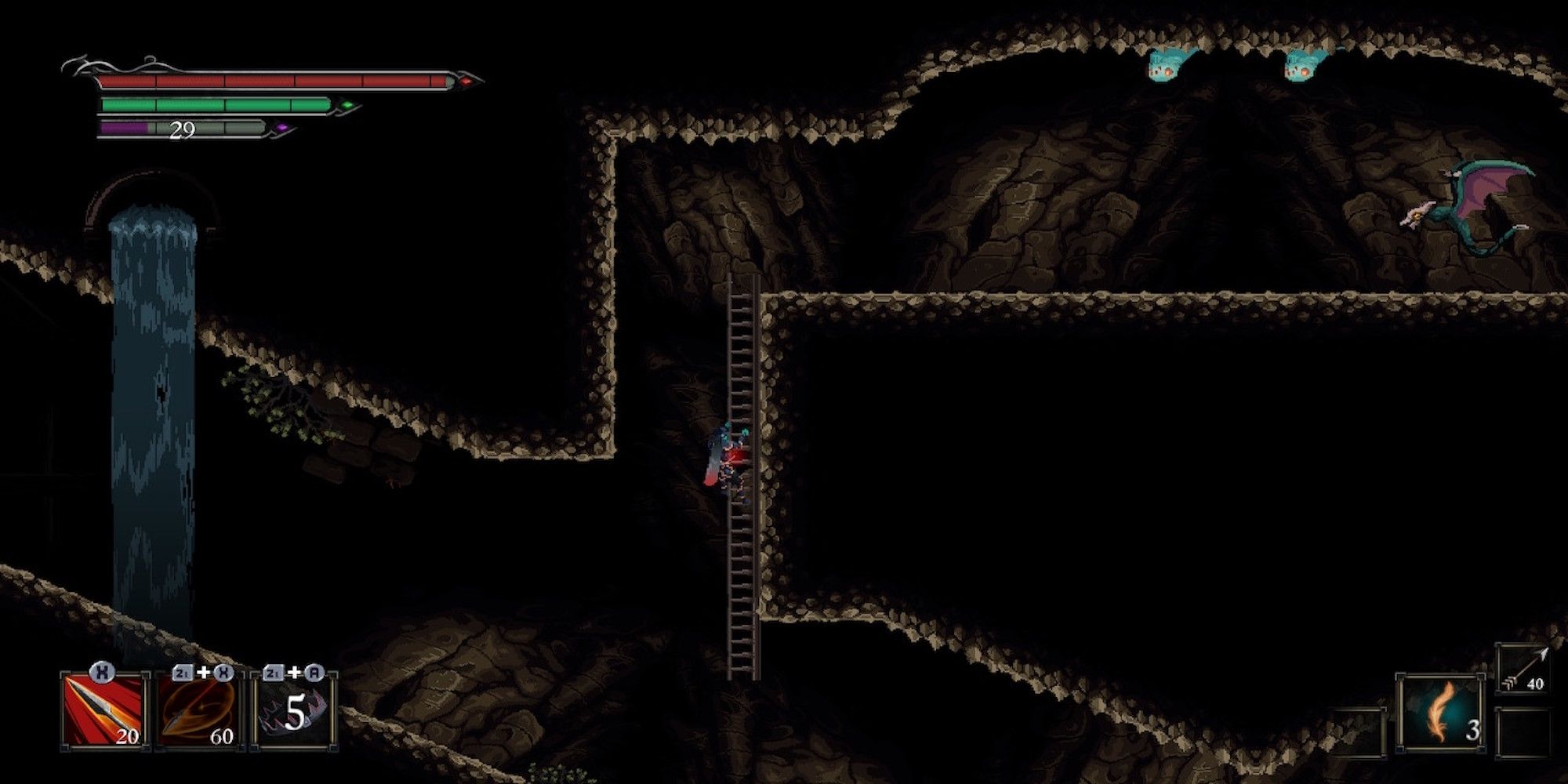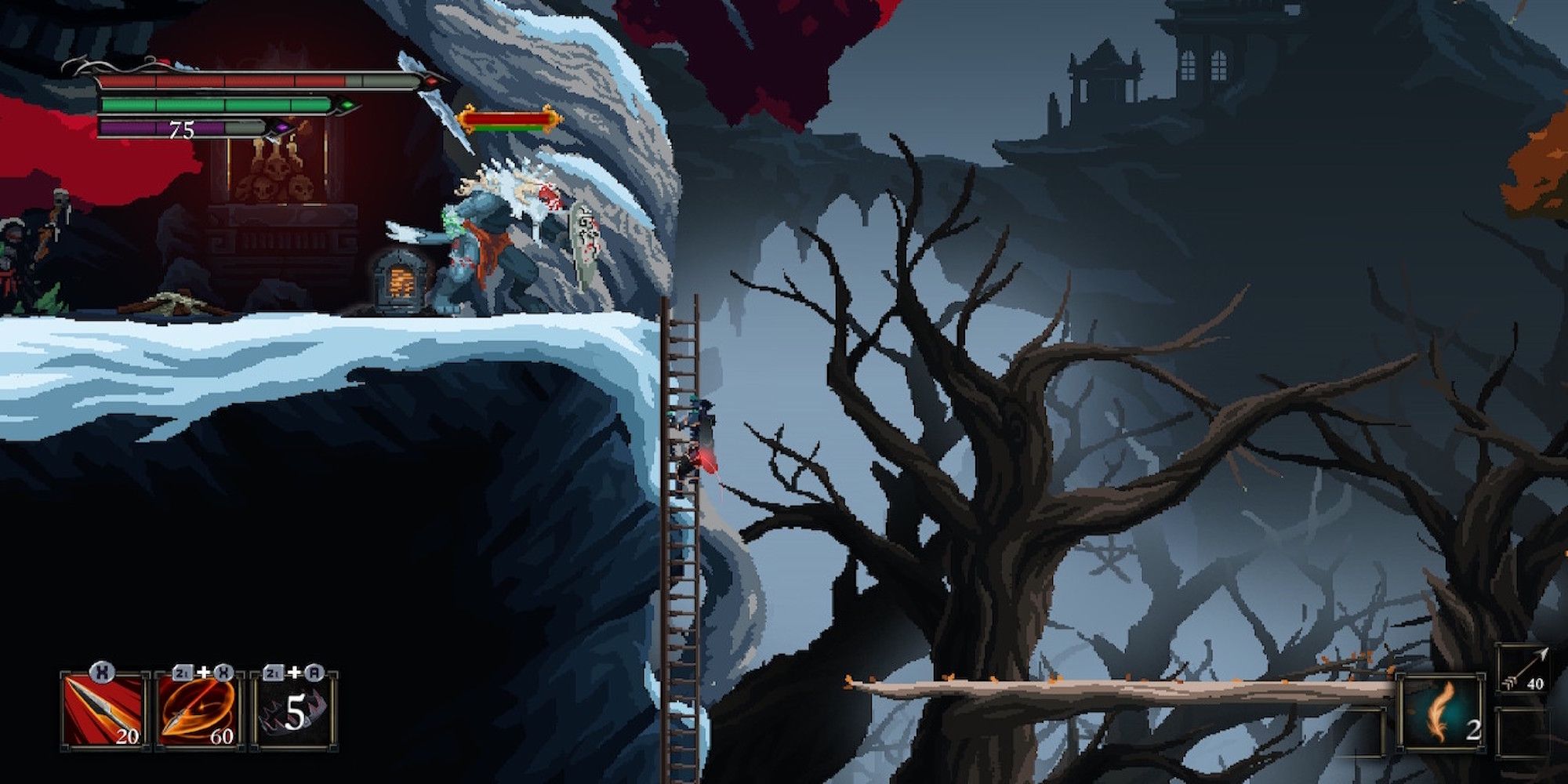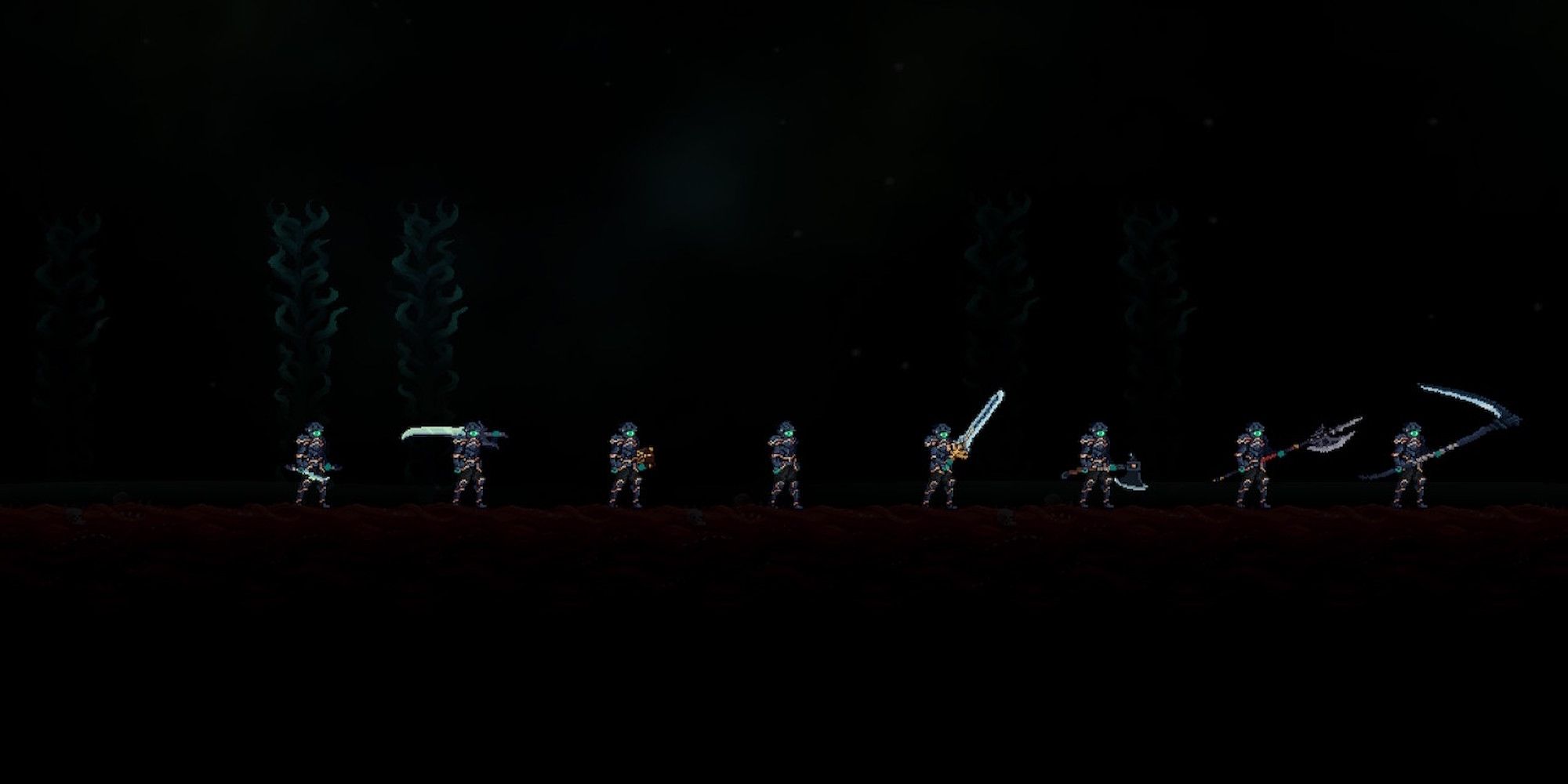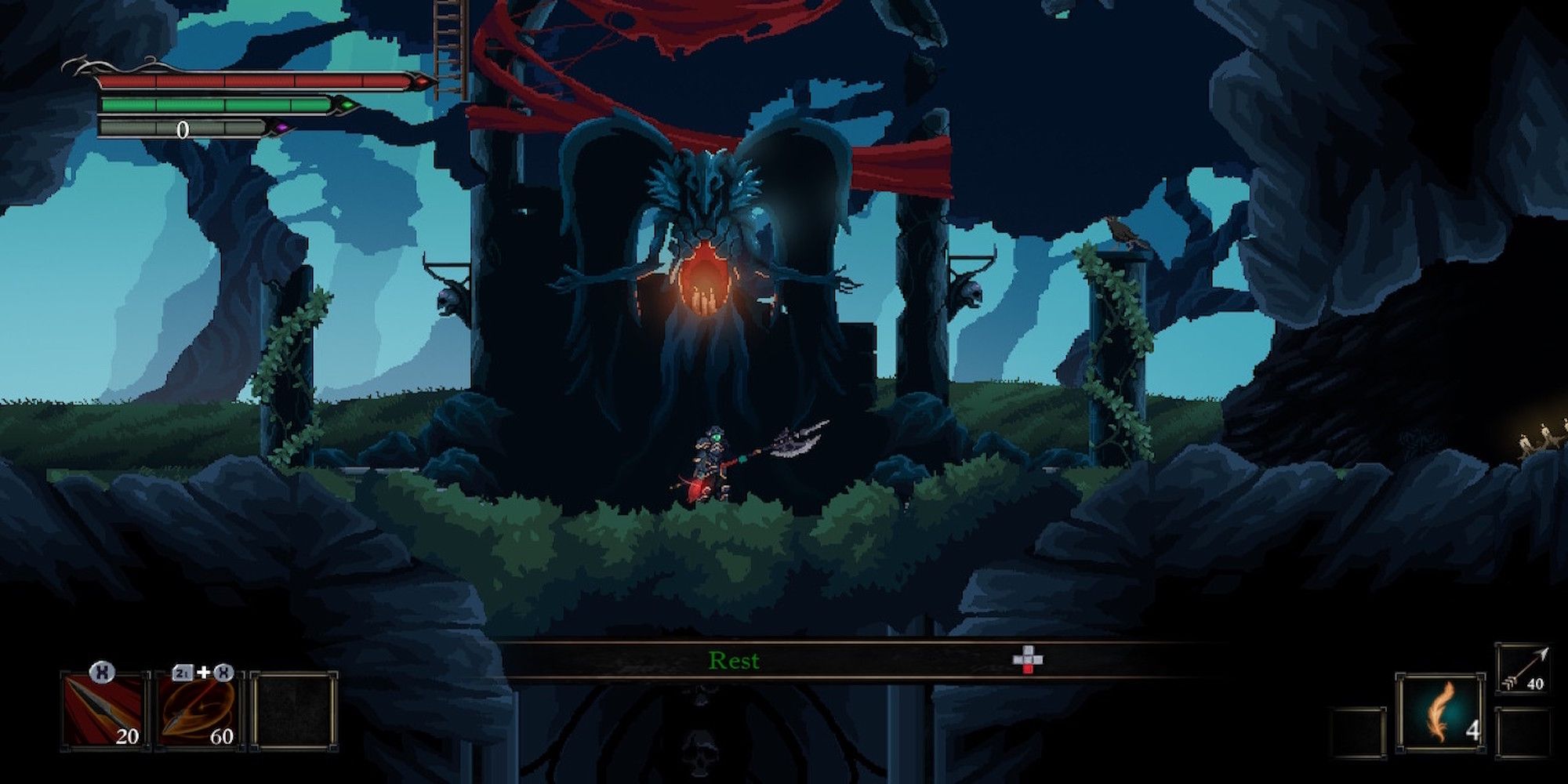Death's Gambit came out in 2018 originally and now returns with a repackaged version called Death's Gambit: Afterlife. It can easily be described as a 2D version of Dark Souls but it’s more than that. It didn’t get extremely good reviews at launch. Gamers and critics seemed to be split on Death's Gambit according to past reviews. This re-release was seemingly made as an attempt at redemption.
The biggest change between this and the original is that it boasts additional levels and weapons. Many of the bugs were also squashed and the gameplay was tweaked ever so slightly. This version also marks its debut of the Switch. Does Death's Gambit: Afterlife do enough to recommend it to people that didn’t like the game before because of things like the difficulty? Likewise, is there enough here for fans to play it again? Let’s get into the pros and cons.
7 Best: Weapon Abilities
Death's Gambit: Afterlife has a lot in common with the action-packedDark Souls games but there is one element this title has over that series: weapon abilities. Every weapon in the game has a class of skills attached to them that run on cooldowns and soul power. That energy is a lot like MP in other RPGs.
These powerful attacks can make all the difference in battle and they can be bought, learned, or found in the world. It’s a nice addition to the combat.
6 Worst: Bosses Withholding Ability Points
There are a few skill trees in the game which correlate to weapons and the character as a whole. This adds another fun element to leveling up the character in order to give players a greater sense of investment.
The downside to this is that skill points are gained primarily from defeating bosses. The skill trees are quite large too so it takes a long time to gain anything meaningful. This makes the game more difficult as upgrading Sorun is much more time-consuming. The nice part about bosses is that they can be replayed for greater rewards so it’s a give and take situation.
5 Best: Lenient Death Penalty
The Dark Souls games have gained a name for themselves as being tough as nails. One of the reasons behind this reputation is that progress can be lost in death. The nice part about Death's Gambit: Afterlife is that death is more lenient. The "souls" equivalent that levels players up in Afterlife, essence, will never be lost.
Phoenix Plumes, the rechargeable healing item, will be lost instead. However, they can be gained back on a corpse run or through save points. No matter how many times the players die these Phoenix Plumes will never truly be lost which makes Death's Gambit: Afterlife a more accessible experience.
4 Worst: Lack Of Accessibility/Difficulty Options
Death is the only lenient thing in this game because there are no true accessibility features in the options. There isn’t even a difficulty setting. Most Souls-like games naturally don’t have difficulty levels because the core challenge is the whole point of them. That seems to be true for Death's Gambit: Afterlife too.
Some people may have hoped to see this update include some easy tweaks but those fixes are just not there. On the positive side of things, nothing in the game ever feels impossible. It just may take a bit of grinding.
3 Best: A Named Protagonist
The stories in the Dark Souls games are a bit hard to follow. Most of the narrative needs to be filled in through extra tomes and digging around online for meaning. Death's Gambit: Afterlife is more straightforward. In fact, the hero is actually named and voiced: Sorun. He fell in battle along with his men on the battlefield.
Death takes a shine to Sorun, revives him, and contracts him to do his bidding. It’s not the most original story in the world but the characters Sorun meets along the way add a nice context to the bloody gameplay.
2 Worst: Can’t Customize Sorun
Sorun being voiced and named does come with a price. Unlike the Dark Souls games, Sorun can’t be customized. He looks the same virtually from start to finish. Equipping weapons will change his appearance slightly but that’s it. This is a shame because it makes the classes not feel special. An Assassin, for example, should look something more like a ninja and not a knight in armor.
That example is just one of many to illustrate the clashing juxtaposition between Sorun’s look and the classes. What he looks like may not matter to some gamers who just want to play Death's Gambit: Afterlife. However, others tend to like the ability of customization in their RPGs.
1 Best: Branching Metroidvania Paths
However difficult the game might be, there is always a different path to take. Once players reach the first hub area, there will be a plethora of areas to explore in any order. If one level is too hard, then there are several other choices to make.
The game overall is like a Metroidvania because of these branching paths and the fact Sorun can learn exploration abilities. One of the first abilities players will get is an air dash. Defeating the bosses of an area will typical grant them something new to open up new possibilities. It’s one of the best strengths of the Metroidvania genre.
Death’s Gambit: Afterlife was released on September 30, 2021 and is available on PC, PS4, and Switch.

